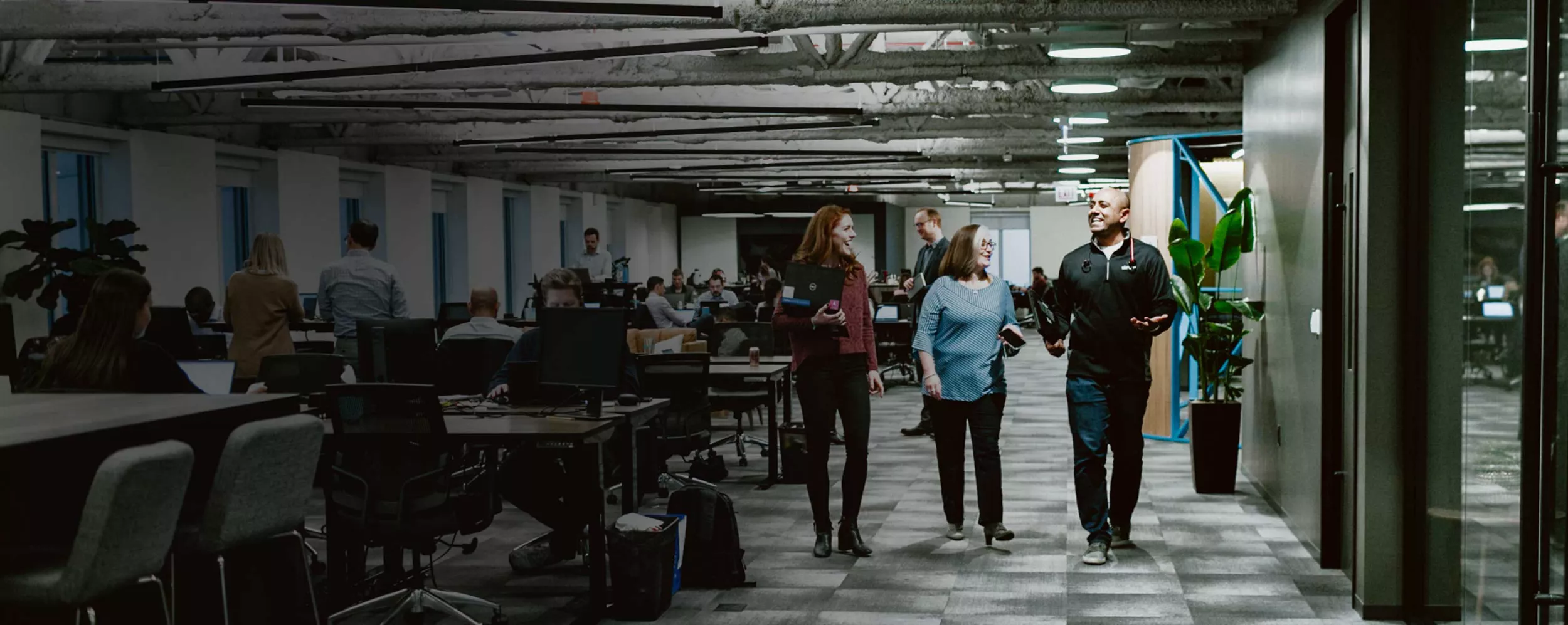Celink
Loan servicing gets a faster future with AI

At a glance
New to artificial intelligence (AI) and machine learning (ML), Celink partnered with Slalom and Amazon Web Services (AWS) as part of the ML Embark program.
Impact
We identified AI/ML use cases, delivered cross-functional trainings, and co-developed a proof of concept, resulting in an AI/ML-powered solution that automates Celink’s default process with 97% accuracy while keeping humans in the loop.
Key Services
Industry
Banking
Key Technologies / Platforms
- AWS ML Embark
Servicing loans, serving clients
Celink is the largest independent subservicer of reverse mortgages in the US and has a portfolio of more than 300,000 loans. As a servicer of loans, not an originator, Celink is able to focus solely on serving its clients, which include private lenders, banks, and their customers.
Celink is one of many companies in the reverse mortgage industry that are realizing the value of artificial intelligence (AI) and machine learning (ML). AI opens the door to new service-enhancing capabilities. Key among these—and appealing to clients and employees alike—is the automation of the vast amount of paperwork innate to the industry.
Celink receives and manages millions of loan-related documents. One mortgage can come with hundreds of different documents from various sources and not all of them are properly indexed, which means finding the right documents within a loan package is often a manual, time-consuming process.
To help Celink accelerate document processing while minimizing the risk of errors, the company’s CIO, Sergey Dyakin, wanted to apply AI/ML. “Celink has a goal of being a technology-driven company,” says Dyakin. “We wanted to create more opportunities to utilize machine learning capabilities and develop this muscle within the company.”
That desire, combined with the strength of Slalom’s technology partnerships, has helped bring Celink’s first AI/ML project to life.
Guidance for a new frontier
Early into Dyakin’s search for help implementing AI/ML at Celink, he grew interested in the Amazon Web Services (AWS) ML Embark program—an immersive, customized ML enablement service that brings executives and technologists together to solve business problems with ML. The program was jointly developed with Slalom and includes a unique combination of discovery, enablement (business and technical), and proof of concept (POC) based on a use case relevant to the participant.
When an opportunity came along for Celink to participate in ML Embark, the company didn’t hesitate, thanks in large part to Dyakin’s staunch advocacy for AI/ML adoption. Slalom and the Amazon ML Solutions Lab would co-facilitate the program, delivering ML Embark over a 10-week period. Together with Celink, we explored different applications of AI/ML and their potential ROI. By the end of the discovery phase, we’d identified six proposed AI/ML use cases for Celink and developed a rigorous ROI model to help determine the highest-value use case for the POC.
From six proposed use cases, a candidate emerged—one of Celink’s most manual processes and most important ones to get right: the filing of mortgage loan defaults to initiate foreclosure. It’s the responsibility of Celink’s foreclosure referral submission team to process defaults quickly and with a high level of accuracy, which helps prevent the filing of incorrect documents in error. Celink could improve the speed and accuracy of the referral submission process by developing an AI/ML model that automatically identifies and classifies the 10 documents essential for processing loan defaults.
Responsibly applied AI
What sealed the deal for the default process to be the first use case was its projected ROI of 121% over the next three years, largely due to efficiency gains. To help Celink’s technologists best ensure that kind of outcome, Slalom and AWS incorporated personalized training into our broader AI/ML enablement plan. Then we got building.
Celink, Slalom, and AWS co-created an ML model that analyzes the approximately 100 different documents in a loan package and surfaces those required for a foreclosure referral. The solution leverages Amazon Textract to extract information from loan documents, and Amazon Comprehend and Amazon SageMaker to identify and classify the necessary ones. On the front end, an interface displaying all the documents by category can be easily navigated by the referral submission team. At the time of writing, the solution has moved into partial production after reaching 97% accuracy in the POC.
Something the solution doesn’t do is exclude humans from the process entirely. Believing that every AI solution should be grounded in transparency and accountability, we recommended that Celink incorporate human validation into the solution. With this particular use case, that means the model may recommend several options for the 10 required documents, leaving the referral submission team to finalize the list by reviewing and either approving or excluding each document. It’s a human “check” to the system that’s worth the assurance of an accurate referral—and a far cry from the amount of manual work the team was doing before.

An AI-enabled organization
As a result of our work together, 22 business and technical executives at Celink now understand how to identify strategic levers to accelerate AI/ML adoption at the organization. In addition, 16 technologists have a foundational understanding of ML science, as well as real-world, hands-on experience to take into their next AI/ML projects. As for the referral submission team, they’re spending less time searching through hundreds of documents and more time evaluating only the most relevant ones, improving speed and accuracy in the process. Celink and Slalom are actively discussing how to pursue new use cases in the months and years ahead.
The program has also helped cultivate a culture of collaboration between Celink’s business and technical leaders. Dyakin says that while Celink has always enjoyed executive support for new technology, the focus with which the company facilitates cross-functional collaboration is proving crucial to delivering real business outcomes.
Referring to this collaboration, Dyakin explains, “I didn’t want this to be one of those projects where IT goes into the basement and the lights flicker and Patrick [Celink’s COO] wonders, ‘What’s that burning smell?’ I was pleased to see there was huge engagement on the part of my colleagues on the executive leadership team. There was appreciation for what the technology can do.”



